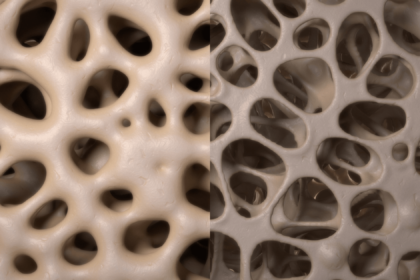
One of life’s cruel ironies is that during the formative first few weeks of pregnancy—a time when nutrition and good health are of utmost importance—our goals for good nutrition go out the window. Or more literally, down the drain.
There is no reliable solution for nausea in pregnancy that works for all women, and no particular foods that seem to agree with all of us either. Even as a nutritionist, I found myself heeding the advice of midwives and friends—“Just eat whatever you can keep down.” Although part of me relished the permission to indulge in junk food, I also found a few ways to get in—and keep down—some more nutrient-dense foods.
If you’re struggling with nausea in the first trimester of your pregnancy (or if you’ve been graced with it during any or all of the three!), you might try some of these foods:
Kale Chips
Kale was part of my daily diet before I got pregnant: kale sautéed with eggs, raw kale salads, kale wilted in tomato sauce, kale ribbons suspended in soup. But I wanted nothing to do with it during my first trimester, which is unfortunate, since kale is high in many nutrients crucial for fetal development: folate, iron, calcium, and other minerals. Since I could have single-handedly kept the potato chip industry in business, I thought I’d see how my body responded to kale chips. They were a hit! This is my favorite kale chip recipe of all time, but if spicy and umami flavors aren’t appealing to you right now, you can also keep it simple with just olive oil and sea salt.
Grass-Fed Whole Milk
As long as you don’t have a dairy sensitivity and aren’t experiencing sinus congestion, whole milk can be a wonderful food to include during pregnancy. Particularly for women who are vomiting and losing weight in the first trimester, milk’s combination of healthy fats, protein, and carbohydrates can make it a simple meal replacement if you can’t keep solid foods down. Be sure to choose grass-fed whole milk from animals who haven’t been treated with hormones and antibiotics. Trickling Springs Cream-Top Whole Milk is one of my favorite local options.
Salty Salads
I’ve always loved Greek-style salads. Incorporating their salty elements—feta cheese and black olives—along with a sharp lemony vinaigrette helped me keep green salads in my regular meal rotations when I was in no mood for most vegetables. Although salt used to have a bad reputation, we’re learning more about the benefits of mineral-rich, unrefined sea salts—especially for fetal development! Boost the protein in your salads with chickpeas and a sprinkle of hemp or sunflower seeds.
Broths
A mineral-rich bone broth is one of the most nutrient-dense foods that is also remarkably easy on the digestive tract. Sip hot broth, or use it in place of water to cook those carbohydrates you’re craving these days. Rice and other grains, as well as mashed potatoes, will benefit both in flavor and nutrition from being cooked in broth. Stir in some miso for added probiotics and some torn nori for iodine.
If these foods don’t work for you, try to find your own creative ways to get a variety of nutrient-dense foods into your diet. But remember that stress and weight loss are much worse for you than falling short of the perfect diet. Those midwives and friends are right—more important than what you eat is that you eat!




